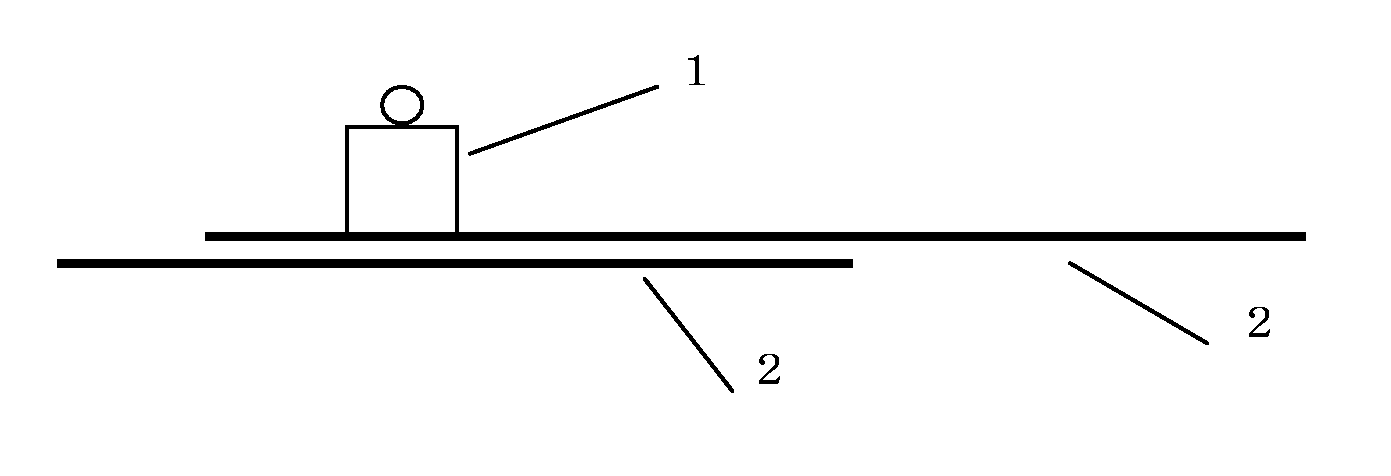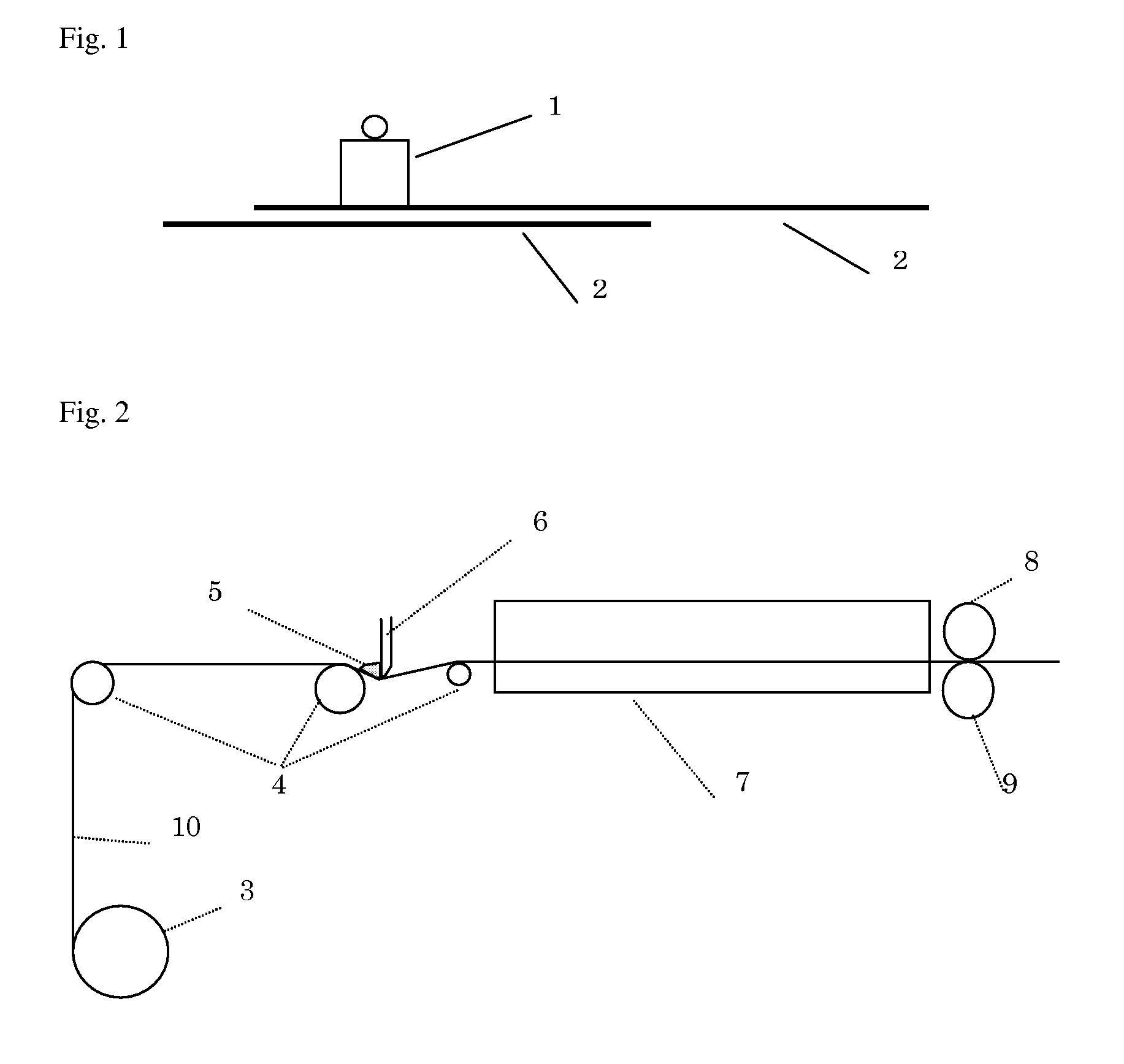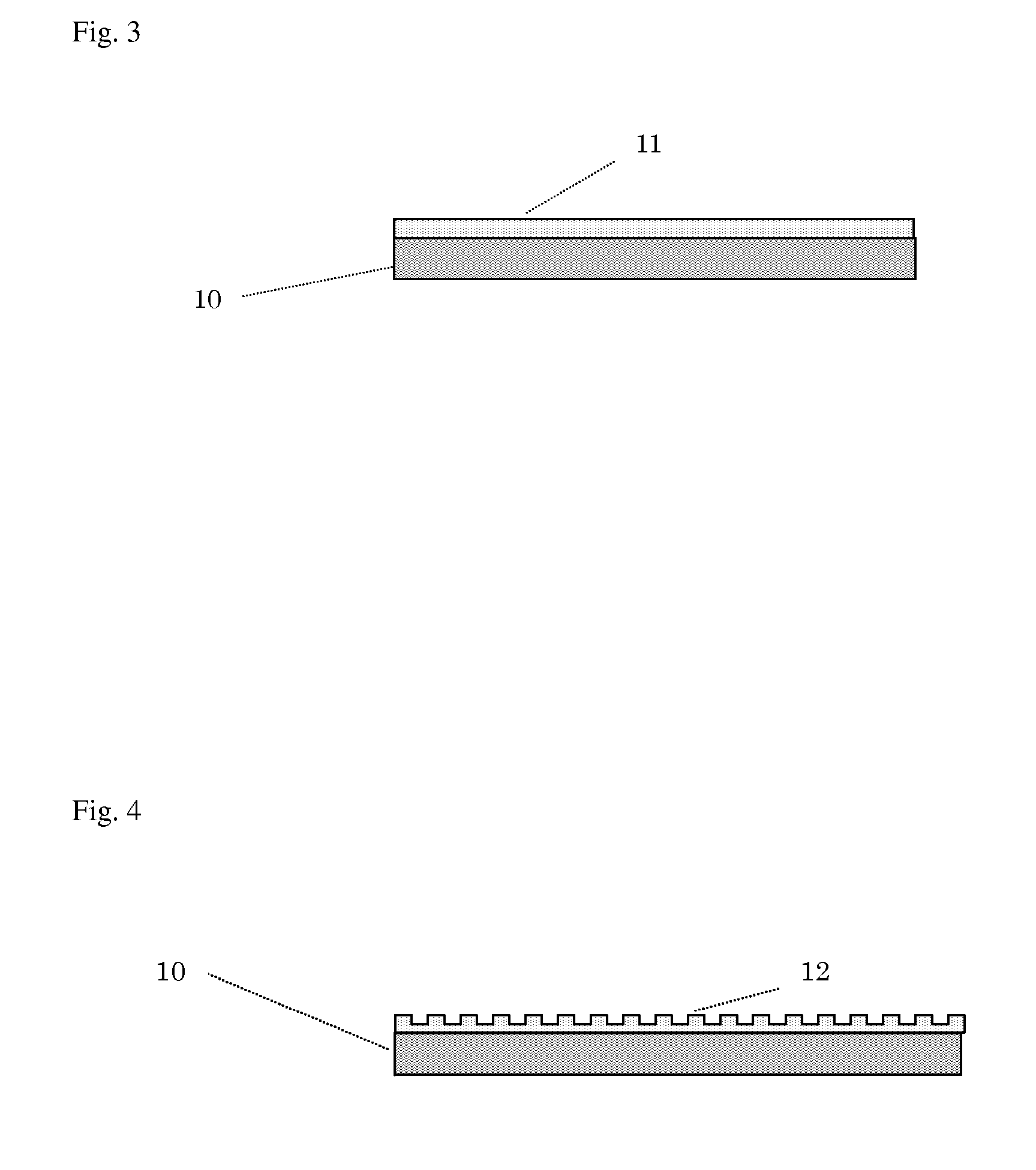Silicone rubber formed product and method for production thereof
a technology of silicone rubber and formed products, which is applied in the field of silicone rubber molding, can solve the problems of high molding cost, complicated manufacturing process, and limited silicone rubber composition form, and achieve the effect of convenient and efficient manufacturing
- Summary
- Abstract
- Description
- Claims
- Application Information
AI Technical Summary
Benefits of technology
Problems solved by technology
Method used
Image
Examples
working example 1
[0061]50 parts by weight of a dimethylpolysiloxane with a viscosity of 10,000 mPa-s having both terminal ends of the molecular chain blocked by dimethylvinylsiloxy groups (vinyl group content: 0.13 wt %) and 50 parts by weight of a mixture (mixing ratio: 42:58) of a vinyl-containing organopolysiloxane resin (vinyl group content: 1.58 wt %) with a molecular weight of 12,000, which was composed of ViMe2SiO1 / 2 units, Me3SiO1 / 2 units, and SiO4 / 2 units and had no softening point, and a dimethylpolysiloxane (vinyl group content: 0.23 wt %) with a viscosity of 2,000 mPa-s having both terminal ends of the molecular chain blocked by dimethylvinylsiloxy groups were placed in a Ross mixer. Subsequently, they were combined with 14 parts by weight of a fumed silica with a specific surface area of 200 m2 / g, 2 parts of water, and 5 parts of hexamethyldisilazane, which was used as a surface treating agent for the silica, whereupon a flowable liquid silicone rubber base compound was prepared by heat...
working example 2
[0064]A silicone rubber-coated fabric having irregularities on the surface of its silicone rubber coating was prepared in the same manner as in Working Example 1, with the exception that, unlike in Working Example 1, after cooling the silicone rubber coated fabric removed from the heating oven to room temperature, the fabric was re-heated in the heating oven at 180° C. for 1 minute and then, immediately after removing it from the heating oven, a wire mesh (plain weave 120-mesh; wire diameter: 80 μm, mesh size: 130 μm) was applied under pressure to the surface of the silicone rubber coating. The difference in height between the ridges and valleys of the irregularities was 30-50 μm. The resultant silicone rubber-coated fabric having irregularities on the surface of its silicone rubber coating was evaluated to determine its properties in the same manner as in Working Example 1, with the results listed in Table 1, which is shown below.
working example 3
[0065]A silicone rubber-coated fabric having irregularities on the surface of its silicone rubber coating was prepared in the same manner as in Working Example 1, with the exception that, unlike in Working Example 1, after cooling the silicone rubber coated fabric removed from the heating oven to room temperature, a wire mesh (plain weave 120-mesh; wire diameter: 80 μm, mesh size: 130 μm) pre-heated for 10 minutes in the heating oven at 180° C. was applied under pressure to the surface of the silicone rubber coating. The difference in height between the ridges and valleys of the irregularities was 30-50 μm. The resultant silicone rubber-coated fabric having irregularities on the surface of its silicone rubber coating was evaluated to determine its properties in the same manner as in Working Example 1, with the results listed in Table 1, which is shown below.
PUM
| Property | Measurement | Unit |
|---|---|---|
| softening point | aaaaa | aaaaa |
| particle size | aaaaa | aaaaa |
| particle size | aaaaa | aaaaa |
Abstract
Description
Claims
Application Information
 Login to View More
Login to View More - R&D
- Intellectual Property
- Life Sciences
- Materials
- Tech Scout
- Unparalleled Data Quality
- Higher Quality Content
- 60% Fewer Hallucinations
Browse by: Latest US Patents, China's latest patents, Technical Efficacy Thesaurus, Application Domain, Technology Topic, Popular Technical Reports.
© 2025 PatSnap. All rights reserved.Legal|Privacy policy|Modern Slavery Act Transparency Statement|Sitemap|About US| Contact US: help@patsnap.com



